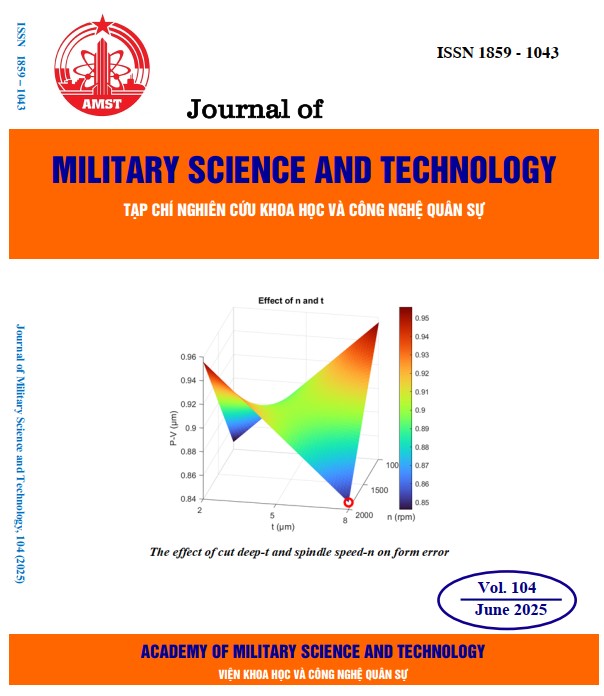Adsorption and desorption of berberine chloride on kaolinite material
399 viewsDOI:
https://doi.org/10.54939/1859-1043.j.mst.104.2025.71-78Keywords:
Berberin; Absorption; Desorption; Kaolinite.Abstract
Berberine is a very popular drug in Vietnam for intestinal diseases. Research on improving berberine purification is of interest due to the high demand for berberine in current drug consumption. Instead of using extraction processes with the presence of sulfuric acid, berberine was extracted by berberine adsorption from diluted NaOH solution with pH = 11 on the surface of kaolinite material and desorption with dilute HCl solution containing 5% NaCl with pH = 5 at 50 oC. The adsorption and desorption efficiencies of berberine under optimal conditions reached 91% and 92%, respectively, when using kaolinite absorbent content at 2000 ppm for 1 hour. This purification method was successfully applied to the medicinal plant sample of Coscinium fenestratum (Vàng đắng in Vietnamese) with a berberine total recovery efficiency of 81% and berberine content of 94%. The NMR spectrum confirmed the molecular structure of berberine.
References
[1]. M. A. Neag et al., “Berberine: Botanical Occurrence, traditional uses, extraction methods, and relevance in cardiovascular, metabolic, hepatic, and renal disorders” Frontiers in Pharmacology, Vol. 9 (AUG), p. 1–30, (2018). DOI: https://doi.org/10.3389/fphar.2018.00557
[2]. J. B. Patil et al., “Berberine induces apoptosis in breast cancer cells (MCF-7) through mitochondrial-dependent pathway,” European Journal of Pharmacology, Vol. 645, No. 1–3, p. 70–78, (2010). DOI: https://doi.org/10.1016/j.ejphar.2010.07.037
[3]. G. Y. Zuo et al., “Antibacterial and synergy of berberines with antibacterial agents against clinical multi-drug resistant isolates of methicillin-resistant Staphylococcus aureus (MRSA)” Molecules, Vol. 17, No. 9, p.10322–10330, (2012). DOI: https://doi.org/10.3390/molecules170910322
[4]. S. Amritpal et al., “Berberine: alkaloid with wide spectrum of pharmacological activities”, Journal of Natural Products, Vol. 3, p. 64–75, (2010).
[5]. N. K. Can “Research on berberine-containing plants worldwide and in Vietnam”, Journal of Medici-nal Materials, Vol. 5, No. 5/2000, p. 129-134, (2000).
[6]. K. Nakagawa et al., “Release and crystallization of berberine in the liquid medium of Thalictrum minus cell suspension cultures”, Plant Cell Reports, Vol. 3, No. 6, p. 254–257, (1984). DOI: https://doi.org/10.1007/BF00269306
[7]. M. Tajiri et al., “The total synthesis of berberine and selected analogues, and their evaluation as amyloid beta aggregation inhibitors”, European Journal of Medicinal Chemistry, Vol. 215, 2021, 113289 (2021). DOI: https://doi.org/10.1016/j.ejmech.2021.113289
[8]. N. V. Han et al., “Extraction of berberine from Coscinium fenestratum (Vàng đắng) using lime wa-ter”, Journal of Pharmacy, – Vol. 1/2017, No. 489, p. 57-61, (2017).
[9]. S. Mustapha et al., “Potential of using kaolin as a natural adsorbent for the removal of pollutants from tannery wastewater” Heliyon, Vol. 5, No. 11, p. e02923, (2019). DOI: https://doi.org/10.1016/j.heliyon.2019.e02923







